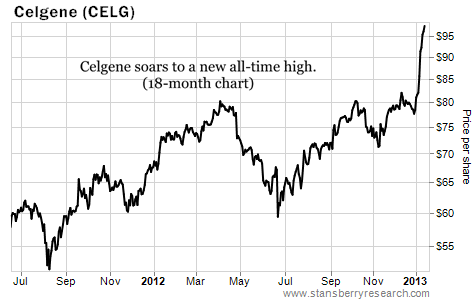| Home | About Us | Resources | Archive | Free Reports | Market Window |
The Best Investment Advice You'll Never TakeBy
Wednesday, January 16, 2013
I guarantee you won't take my advice...
Over the past two weeks, I've shown you how to use the single greatest investment secret ever discovered. I've shown you how to buy capital-efficient companies and compound your wealth at double-digit rates – safely – for decades.
I've described exactly how to measure capital efficiency (it's easy) and explained the pitfalls to avoid (even smart investors fall into these traps).
Using just the information contained in these two essays, a little bit of common sense, and a little bit of discipline, you can become a world-class investor using this strategy. And yet... very, very few people will pursue this approach.
I believe most investors think this strategy is simply too boring... or too good to be true. They say, "All we're doing is buying very well-run, extremely capital-efficient stocks and re-investing the dividends? What about trading? What about technical analysis? What about options?"
Look... you can do all those other things if you want to. But almost no matter what else you decide to do, you will NOT beat the results of a value-based, capital-efficient strategy over the long term.
Let me show you again with one more classic example.
Warren Buffett's holding company, Berkshire Hathaway, first acquired a stake in See's Candies in 1972. See's Candies was a high-class business with good profit margins, a loyal client base, and terrific capital efficiency.
Buffett would say the company possessed large amounts of "economic goodwill." I'd call it "capital efficient."
Look what's happened:
Buffett is looking for companies that produce high annual returns when measured against their asset base and require little additional capital. He is looking for a kind of financial magic – companies that can earn excess returns without requiring excess capital. He's looking for companies that seem to grow richer every year without demanding continuing investment.
In short, the secret to Buffett's approach is buying companies that produce huge returns on tangible assets without large annual capital expenditures.
With this in mind, take a look at the table above. Over 35 years, See's has grown its earnings by 4,100%... while growing tangible assets by only 500%. As Buffett points out in his 2007 letter to shareholders...
Does that sound like a business you'd be interested in? See's only required $32 million to be reinvested in its own business, but yielded $1.35 billion in payments to its owners.
That's the power of a capital-efficient business. And it's not hard to put it to work in your investment account.
Is it really that hard to judge which high-quality companies are very likely to retain their brands, their customers, and their business models long into the future? Is it really that hard to buy these stocks when they are trading for a reasonable price (say, 10 times cash profits)? Is it really that hard to simply reinvest the dividends?
No, it's not. All the things I'm suggesting you do with your long-term investments are actually easy to understand and implement.
I'm convinced... it is almost impossible for investors following any other kind of strategy to beat the long-term results of investing in high-quality, capital-efficient companies and reinvesting the dividends.
I'm sorry it's boring... but it works.
Good investing,
Porter Stansberry
Further Reading:
Capital-efficient companies – like Hershey's, Coca-Cola, and McDonald's – can make serious, long-term investors who buy at the right price rich for decades to come. Learn more about what Porter calls the "single greatest investment secret ever discovered" and what to look for when selecting these investments here and here.
Market NotesANOTHER BULLISH SIGN FOR BIOTECH Another one of biotech's "bellwethers" is booming...
Regular readers know biotech is one of the greatest "boom and bust" sectors of the market. As Steve has written several times, if you catch a good biotech boom, you can make extraordinary gains.
Last month, we noted the strong price action in biotech heavyweights, Amgen and Gilead. As we explained, keeping tabs on the profits and share prices of these big companies is critical for gauging the trend for the overall sector, including the smaller players.
Today's chart shows the recent price action in shares of Celgene (CELG), biotech's third-biggest player. Celgene often uses its profits to buy smaller biotech names that are working on discovering the next potential blockbuster. So when business is booming for this $40 billion bellwether, it's a good sign for the entire industry.
Celgene just said it expects sales to double over the next five years. Shares soared to a new all-time high on the news. Celgene's uptrend is another bullish sign for biotech investors.
– Larsen Kusick
 |
In The Daily Crux
Recent Articles
|
||||||||||||||||||||||||


